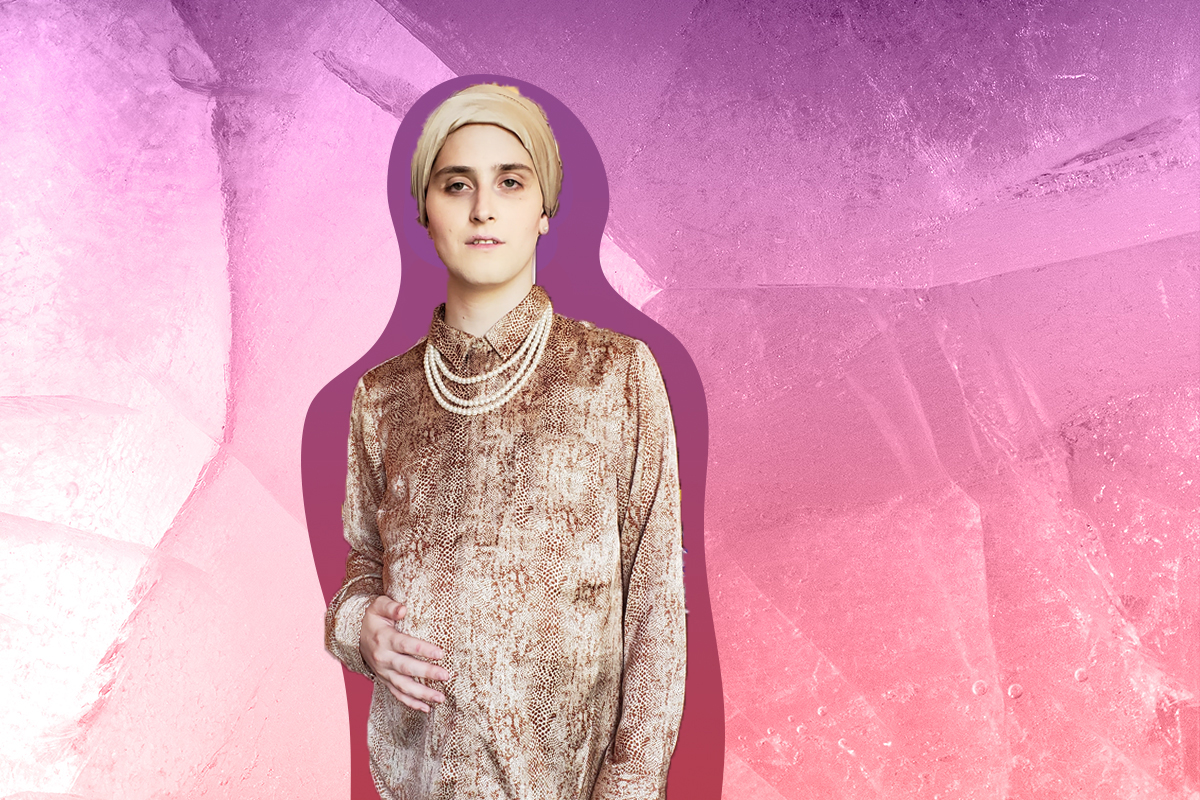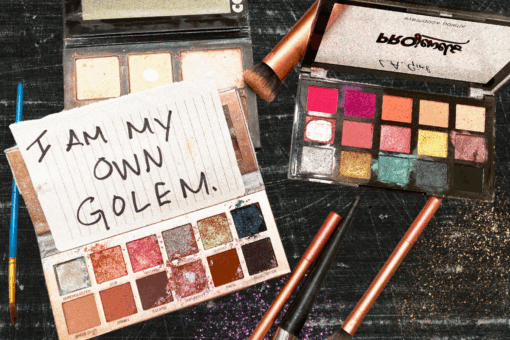“Oh wow, you look just like your sister!” my friend Shaindy exclaimed. She went to school with my third oldest sister, Esther Gitti (I have eight sisters). We were on the set of Unorthodox, the Netflix series about a young woman who leaves her Hasidic family in Williamburg, Brooklyn — where Shaindy and I were also raised — to find a new life of freedom in Berlin.
That day we were filming a scene in Brooklyn. I was dressed like a Hasidic woman, playing a Yiddish speaker in the background as an extra. More specifically, I was wearing a tichel, the traditional head covering of the most pious Hasidic women, and it was tied in the same way my married sisters tie their tichels in real life.
I smiled at Shaindy’s comment. However, part of me also felt uneasy.
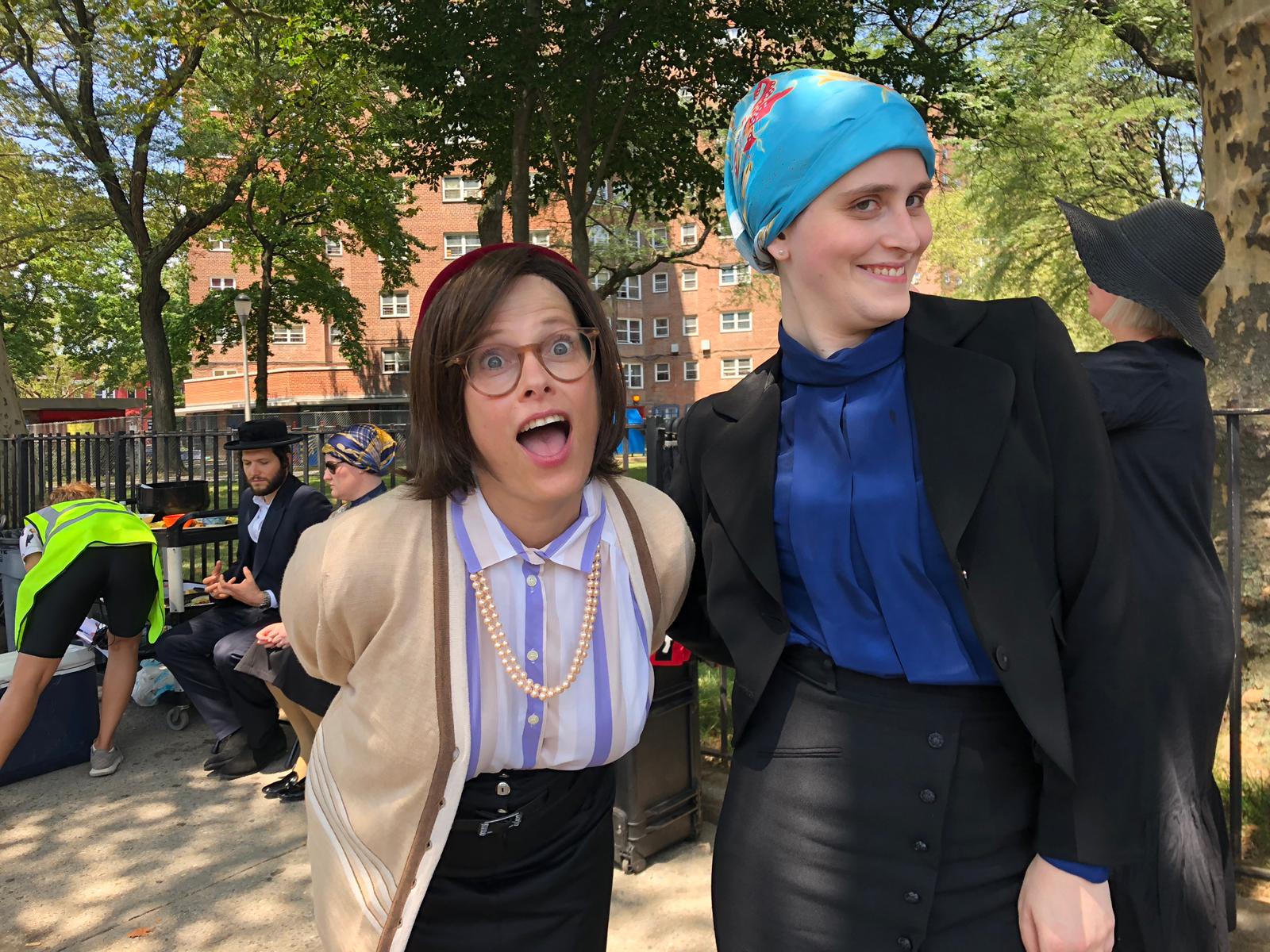
A few minutes later, as the whole cast was noshing on some bagels and cream cheese, one of the women on crew spotted me. She looked at me and chuckled. “It took me a minute to recognize you! You look so different as a Hasidic woman.”
“By the way” she continued, “I am curious how you feel being dressed like the women in your family. Especially given that I imagine you are not a fan of women covering their hair?”
I stopped to think for a second. There was so much to unpack.
Like Esty, the main character of Unorthodox, I was raised in a Hasidic family but eventually broke apart from the community to forge my own path. Unlike Esty, I also had an added layer of complication in the fact that, though I always knew I was a girl, I was raised as a boy.
Before I came out as a woman of trans experience, a fellow trans woman who was supporting me at the time asked if I was interested in a few of the wigs she had. It is quite common for trans women early on in our transitions to wear wigs when dressing up, while we wait for our natural hair to grow to a desired length. So I went over to her house to try on some wigs.
First up was a shoulder-length brunette wig. It was very natural looking and blended in perfectly with my hair. She helped me put it on and handed me a mirror to see how I looked. But in the mirror, instead of seeing myself, I saw a Hasidic woman. I felt a tremor in my body. I took it off, ran to the bathroom, and burst out crying. I could hardly explain to myself why, and being early on in hormone therapy might have amplified it, but I was shaking uncontrollably.
There was, again, way too much to unpack.
First and foremost, there was the gender part. Since I was a young girl, I fantasized about being able to live and dress like a girl. At the time, these fantasies involved being the only kind of girl, and more importantly, woman, I knew: a modest Hasidic woman.
I fantasized about wearing some of the beautiful navy two-piece suits Mommy used to wear. I fantasized about wearing colorful tichels my oldest sisters — who were just starting to get married — wore. I fantasized about wearing a “shtern tichel,” a unique head-covering consisting of a brown base adorned with a beautiful floral pearl tiara that married women of some rabbinic/Hasidic royal families, including Mommy, wore on Shabbat and holidays.
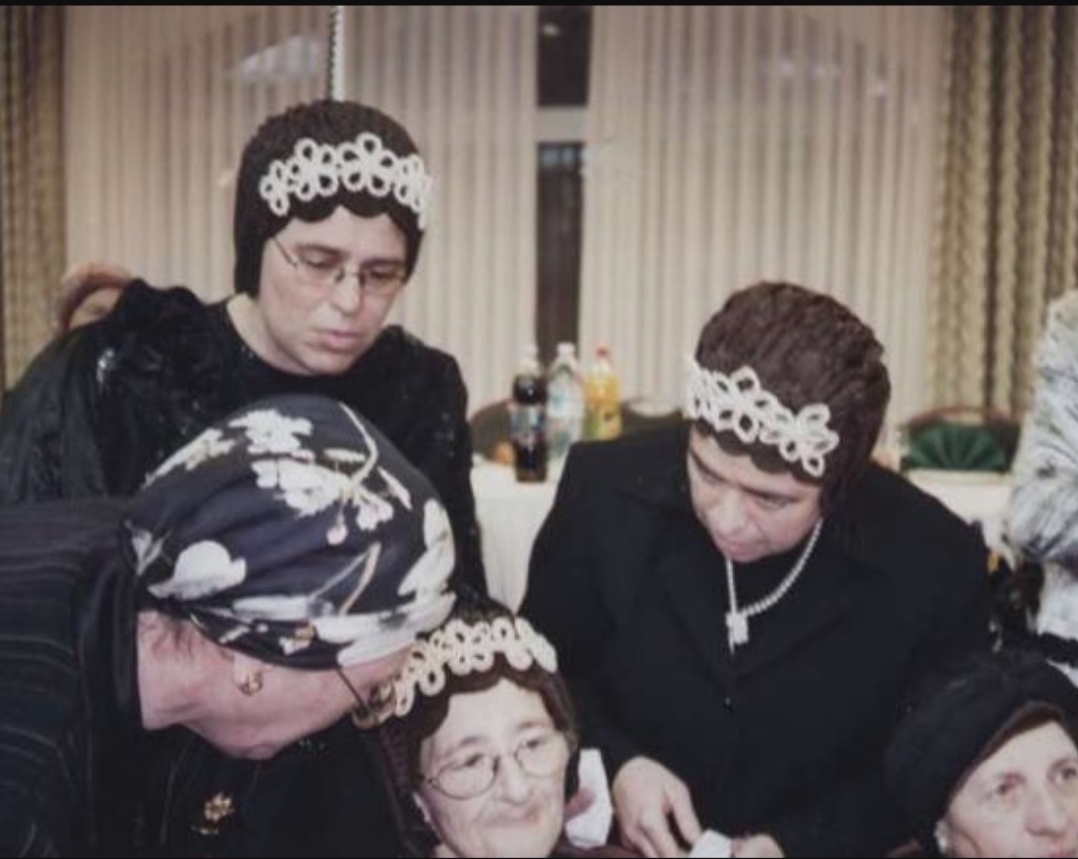
Yet, even as a young child, other Hasidic customs — especially the one of brides shaving their hair the day after their wedding, as Mommy and all my sisters did, and still do — involving women completely freaked me out.
That was probably because, from a really young age, practices that were fundamentally religious were deeply tied with my gender identity, both of which I only got to experience in one strict way. I only got to physically experience living as a boy, and I only got to experience living a Hasidic life.
On the deepest level, though, these two parts of me were tied in the most traumatic way: the lack of choice. The feeling, and socially imposed knowledge, that I was stuck. I was stuck living as a boy, and I was stuck living a Hasidic life.
Until age 20, I was convinced that both gender and religion, the strongest parts of who I was, were working against me: There was nothing I could do to change either one of them.
But as I got older and started to rebel — which I eventually wrote about in my memoir, Becoming Eve — my ideas and knowledge of gender and religion started to evolve. I always identified as a girl, and I always identified as Jewish, and I still proudly identify with both, but what I do with that, and how I practice them both, has radically changed.
When I finally left the Hasidic community, my brain made one thing clear: If I wanted to avoid reliving my trauma, my gender and religious identities could not in any way be the same femininity and Judaism that I knew growing up. That’s why the moment when I saw myself in a wig that resembled some of the Hasidic women I was raised around triggered all of it and so much more.
And so, I resisted wearing a wig. Even after I came out, when for the first few months my hair was not what I wished it to be, and in the face of so many friends suggesting wigs, I could not bring myself to wear one.
I attempted head covering one more time, as part of a Purim costume in 2016. It felt good for a bit, but when I looked at the pictures, and took note of the feelings that came with it, one thing became clear: Abby, stay away from any traditional hair covering.
For over three years, I stuck to it.
Then, I made a new friend. A Muslim woman who did not just cover her hair, but was proud of it. She is one of the most progressive, feminist women I have ever befriended. After long conversations, she helped me work through my feelings around hair-covering. I realized one basic principle: Real feminism means supporting a woman’s right to choose. Hair-covering is in no way an indicator of feminism; choice is. Choosing to cover your hair can be just as much of a feminist statement as choosing to uncover it.
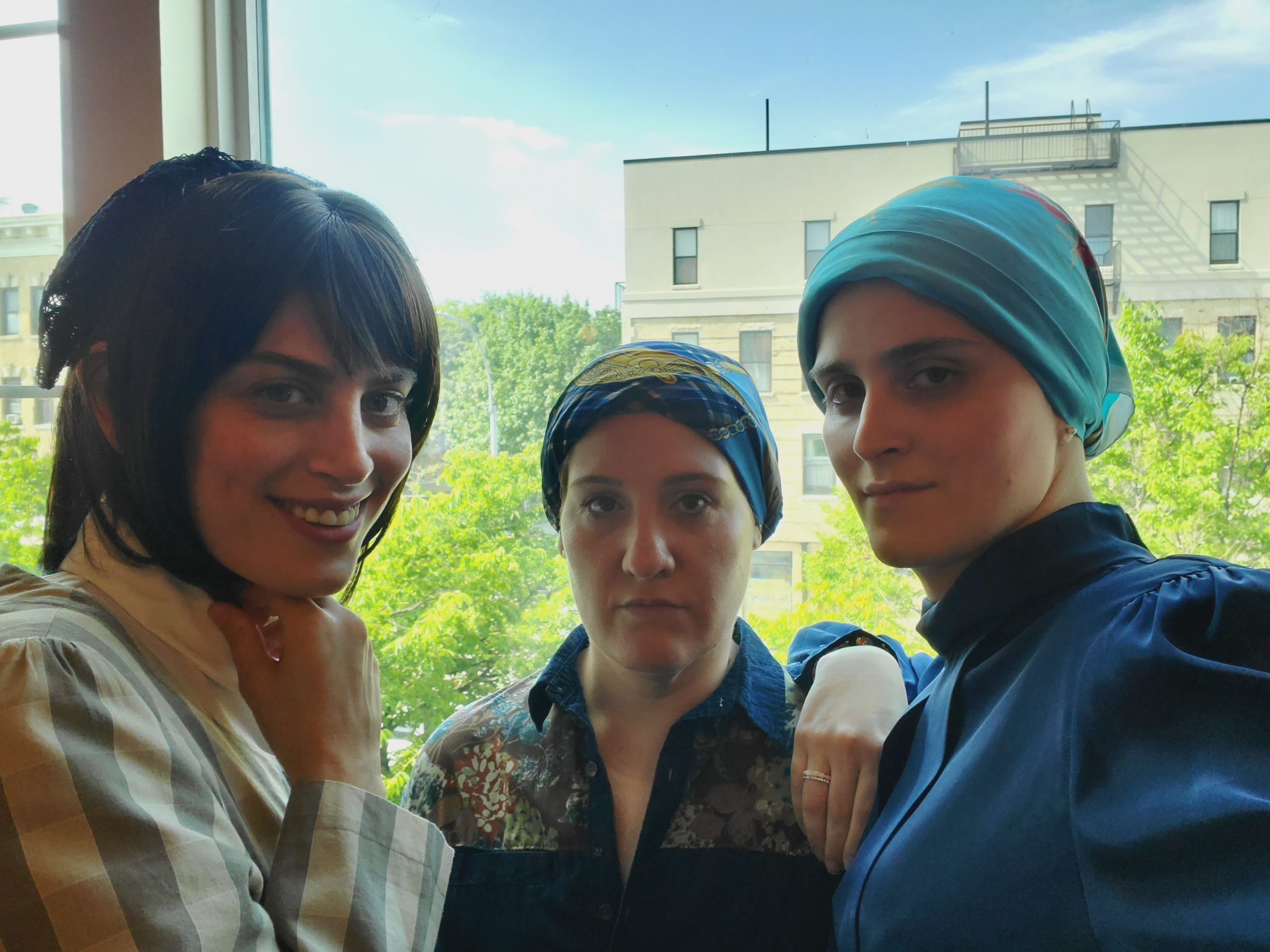
So, when my friends Eli Rosen (the Hasidic and Yiddish consultant on Unorthodox) and Anna Winger (one of the show’s writers) asked me if I would join them for a few scenes dressed as a Hasidic woman, it felt like an opportunity to reclaim myself and my traditions. To reclaim what it means to be a woman, to reclaim what it means to be Jewish, and to reclaim what it means to choose.
Yes, I know, it’s just a show, and I was wearing a costume. Yet to me — to my mind and body — it is a proud reclamation, one that just a few seconds of will be seen by millions of people on Netflix.
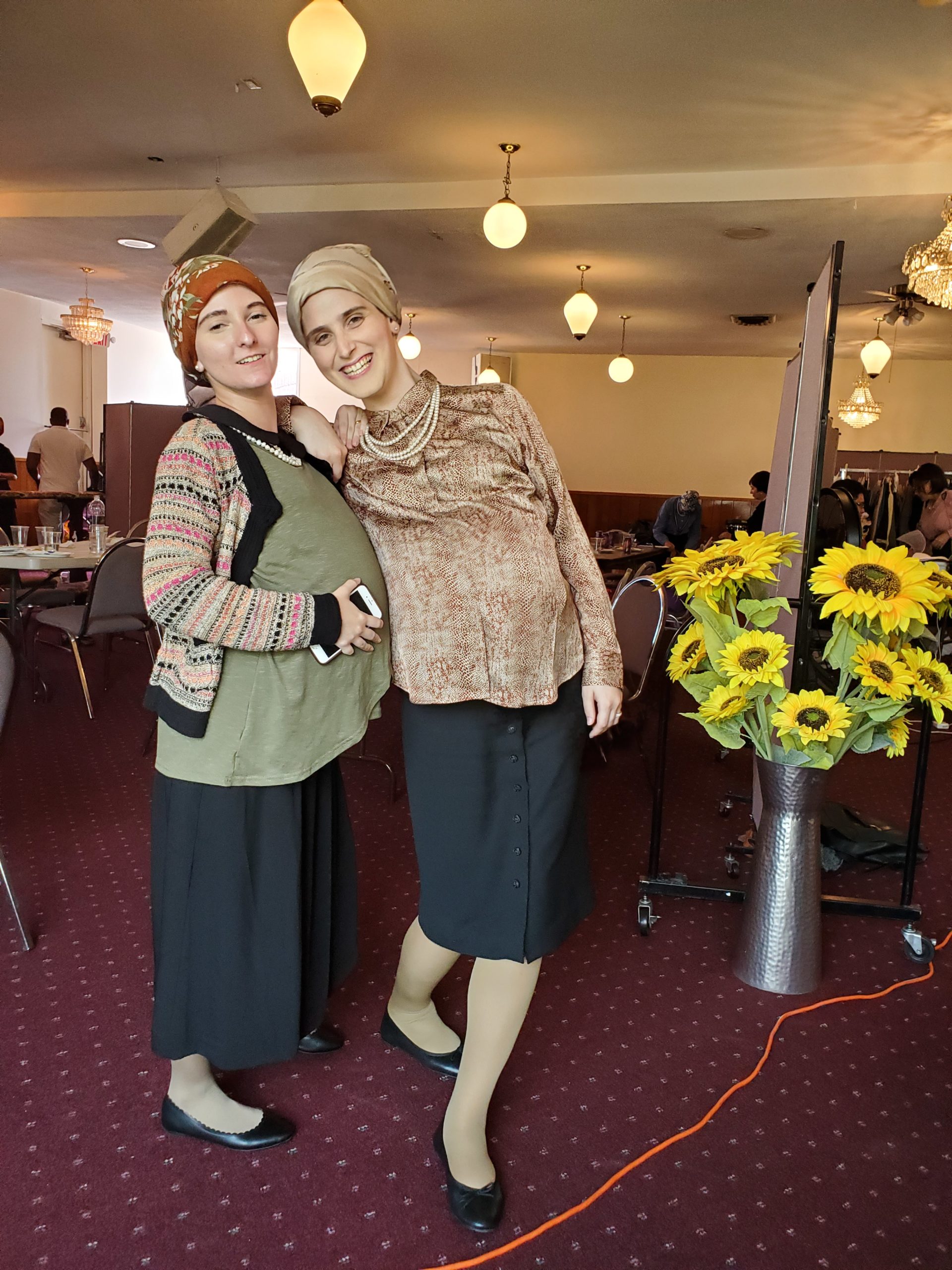
On set, when that woman on crew casually mentioned that I must be against women covering their hair, I finally knew exactly what to say. “Well,” I responded, “I am against women being forced or even just obligated to cover their hair.”At that moment, I felt like I came full circle. And now, whenever someone asks me that again, I will say what I tell my sister and other Hasidic friends: “I will fight for your right to cover your head in public and in private. I will just as much (okay, maybe a bit more if I’m being honest) fight for your right to uncover your head, and body, in private and in public!”
Header Image of Abby Stein courtesy Abby Stein.
